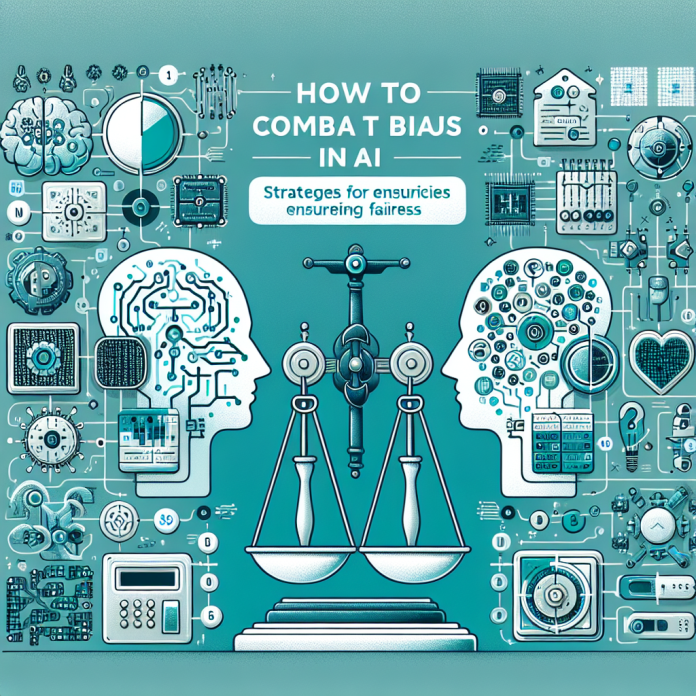## Introduction
Artificial Intelligence (AI) has transformed the way we live, work, and interact with technology. From chatbots to autonomous vehicles, AI is everywhere. However, with this rapid advancement comes the challenge of bias. AI systems are trained on data that often reflect the biases of society, resulting in discriminatory outcomes. In this article, we will explore strategies to prevent AI bias and ensure that these systems are fair and ethical.
## The Problem of AI Bias
Imagine a scenario where an AI-powered recruitment tool rejects a female applicant because the algorithm has been trained on historical data that favored male candidates. This is just one example of how bias can creep into AI systems and perpetuate discrimination. Bias in AI can stem from various sources, including biased data sets, flawed algorithms, and lack of diversity in the development team.
## Strategies to Prevent AI Bias
### 1. Diverse and Inclusive Data Sets
One way to prevent bias in AI is to ensure that the training data sets are diverse and inclusive. This means including data from a variety of sources and perspectives to account for different demographics and viewpoints. For example, when training a facial recognition system, it is important to include images of people from all ethnicities and backgrounds to avoid bias against certain groups.
### 2. Transparent and Explainable Algorithms
Another important strategy is to make AI algorithms transparent and explainable. This means that developers should be able to understand how the algorithm makes decisions and justify those decisions to users. By shining a light on the inner workings of AI systems, we can identify and correct biases before they result in harmful outcomes.
### 3. Regular Audits and Monitoring
Regular audits and monitoring of AI systems are essential to detect and address bias. By continuously evaluating the performance of AI algorithms and analyzing the outcomes, developers can identify biases and take corrective actions. This can help ensure that AI systems are fair, unbiased, and in line with ethical principles.
### 4. Ethical Guidelines and Standards
Adhering to ethical guidelines and standards is also crucial in preventing AI bias. Organizations developing AI systems should have clear ethical frameworks in place to guide their decisions and ensure that their technology is used responsibly. By incorporating ethics into the development process, we can create AI systems that prioritize fairness and equality.
### 5. Stakeholder Engagement and Collaboration
Finally, stakeholder engagement and collaboration are key in preventing AI bias. By involving a diverse group of stakeholders, including data scientists, ethicists, policymakers, and community members, in the development process, we can gather different perspectives and insights to identify and mitigate bias. Collaboration ensures that AI systems are developed with a holistic and inclusive approach.
## Real-life Examples
Let’s look at some real-life examples of how organizations are implementing strategies to prevent AI bias:
### 1. Amazon’s Gender Bias Controversy
In 2018, it was revealed that Amazon had to scrap its AI recruiting tool because it showed bias against female applicants. The tool was trained on historical data that favored male candidates, resulting in discriminatory outcomes. This incident highlighted the importance of diverse and inclusive data sets in preventing bias in AI systems.
### 2. Google’s Ethical AI Principles
Google has set forth a set of Ethical AI Principles to guide the development and deployment of AI technologies. These principles emphasize transparency, accountability, and fairness in AI systems. By establishing clear ethical guidelines, Google is working to prevent bias and ensure that its technology aligns with ethical standards.
### 3. IBM’s AI Fairness 360 Toolkit
IBM has developed the AI Fairness 360 Toolkit, a comprehensive resource for detecting and mitigating bias in AI systems. This toolkit provides developers with tools and algorithms to evaluate the fairness of their AI models and take corrective actions. By offering a practical solution to address bias, IBM is leading the way in promoting ethical AI.
## Conclusion
Preventing AI bias is crucial in ensuring that AI systems are fair, ethical, and inclusive. By implementing strategies such as diverse and inclusive data sets, transparent algorithms, regular audits, ethical guidelines, and stakeholder engagement, organizations can mitigate bias and create AI technologies that benefit society as a whole. As we continue to advance in AI technology, it is essential to prioritize fairness and equality to build a better future for all.

